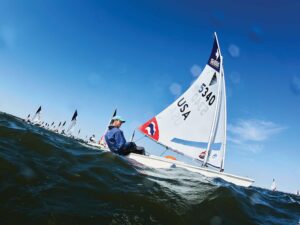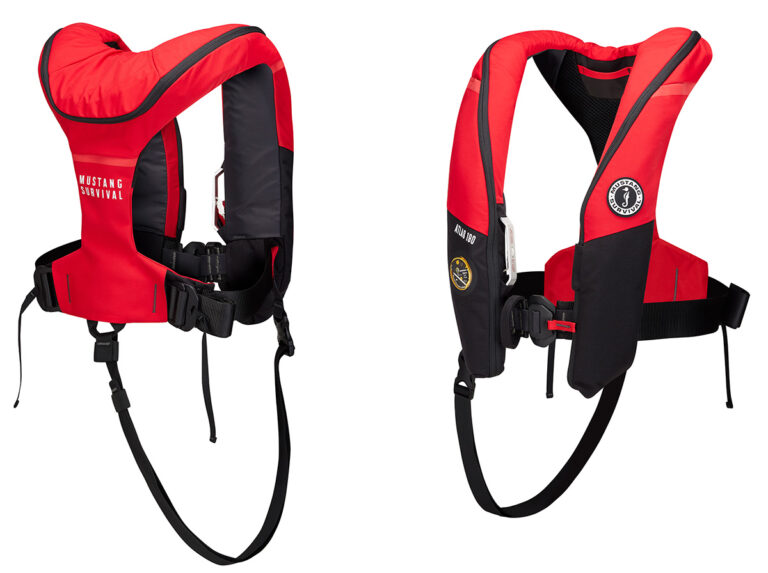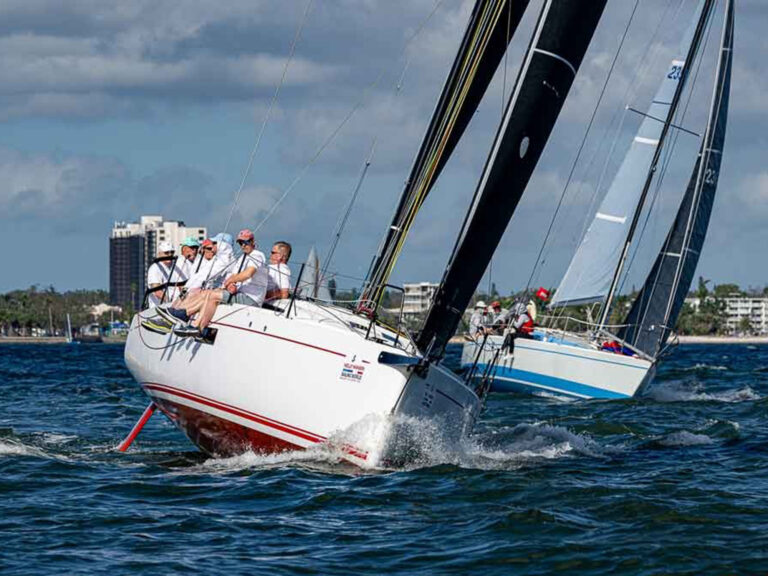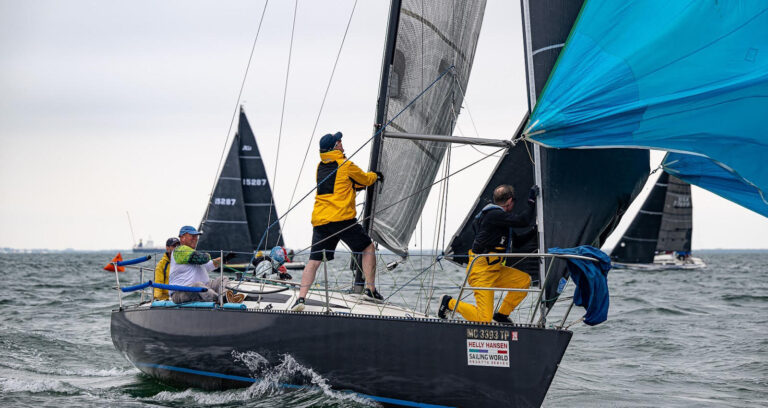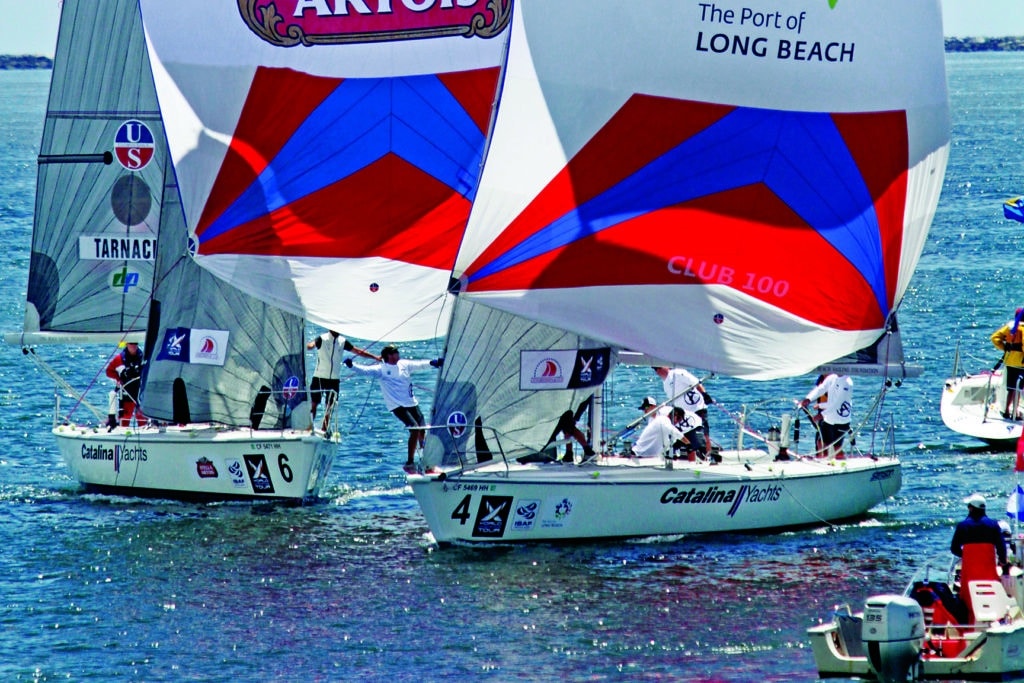
I grew up a Los Angeles Lakers fan, so it pained me to see the storied NBA franchise become irrelevant as it relied on the decreasingly relevant Kobe Bryant. Finally, in his 20th season, Bryant declared his plan to retire. I could now exhale. Following Bryant’s announcement, Oklahoma City Thunder superstar Kevin Durant couldn’t contain himself. “He’s a legend, and all I hear is about how bad he’s playing, how bad he’s shooting, time for him to hang it up,” he said to the media. “You guys treated one of our legends like shit, and I didn’t really like it.”
But Durant was missing the point, and it reminded me of how professionalism changes sport: Sport becomes entertainment for the fan and a job for the athletes. Maintaining the integrity of the game gets harder, but the game must come first, a critical point as sailing ventures deeper into the entertainment business.
When I was in my 20s and ready to give the Olympics a try, I decided the Tornado would be my class. I had won the 1990 US Sailing Championship of Champions in the Hobie 18, and while I didn’t have much catamaran experience, multihulls were fun. My disdain for training was mitigated by a sweet ride. I loved sailing the Tornado, and I can totally relate to the America’s Cup sailors now making a living racing big cats.
When the America’s Cup shifted to multihulls, the impetus was turning the competition into an entertainment event. But the sailors were the big winners. Their job just got better, and they frequently shared their excitement about the new boats and the new style of sailing. While Cup traditionalists questioned the shift from monohulls, others hung on to the words and experiences of the sailors. These boats were the future, they said. It was convincing.
Of course, they wanted them to be the future, because they were a gazillion times more fun than the IACC class used in the previous five Cups. The event was completely overhauled, without independent management, and gone were many time-honored traditions, including elements that had made the event unique and treasured. The focus was now on television schedules, fan appeal, and engaging an entirely new audience. It became a different game.
Whether the modern America’s Cup is better, more entertaining or more meaningful depends on which side of the aisle one stands, but what the change has done is disrupt the sport’s paradigm. The America’s Cup is the elite event, one to which professional sailing roads previously led, but now, with foiling catamarans capable of freakish speeds, the paths that once led aspiring sailors to the castle no longer exist.
The World Match Racing Tour had been the ultimate training ground for the America’s Cup. It offered fledgling teams a chance to display their skills while giving Cup campaigns a platform to remain sharp. The tour used a variety of keelboats, in which performance and strategic skills were largely transferable to the Cup, but when the catamarans came into play, the tour found itself at a crossroads. It was the pre-eminent monohull match-racing series that offered no advancement beyond its own championship. The top sailors with higher aspirations left to seek out catamaran skills.
In its quest to re-establish itself, the tour reached out to Aston Harald AB, the Swedish manufacturer of the M32, a 32-foot carbon-fiber raceboat. Aston Harald bought in, visualizing the tour as a means to promote and sell M32s. In the first year of using M32s at most tour events, there is traction again among young sailors with America’s Cup aspirations.
I fully expect all the competitors will be thrilled with the switch. They now get to sail fast boats, with prize money that can compete with other avenues of professional sailing, but what becomes of the racing? I plan to filter their enthusiasm and will wait to measure the entertainment, but I don’t expect the style of M32 racing to compare with what we saw on San Francisco Bay in 2013.
When the America’s Cup switched to the AC72, I was certain the excitement of fast boats would be short-lived once we realized their lack of maneuverability. When the AC72s unexpectedly jumped onto foils, it was awesome, but match racing is about controlling one’s opponent. It’s meant to be a chess match, not a sprint, and when too much speed is lost in a tack or jibe, controlling an opponent is not an option. The racecourse becomes a lottery as teams bounce off course boundaries, praying they’re in phase with Mother Nature.
The 34th America’s Cup Match wasn’t rescued by Oracle Team USA’s legendary comeback. Rather, it was saved by how the teams learned to maneuver the boats with speed. They stayed on the foils through jibes and invented a “roll tack” upwind that carried enough speed for the leader to control its opponent. Tactics and strategy returned to the game. The faster team won the America’s Cup, and balance was re-established.
The M32, however, is a traditional catamaran that won’t exhibit similar maneuverability. The boat is relatively easy to sail, and the tour will give it and Aston Harald generous exposure. While I am of mixed opinion about this elite professional match-racing circuit being used to sell M32s, I am concerned that the tour remains sanctioned by World Sailing to award the World Match Racing Championship title to its season champion. With nearly all lower-tier match racing done in monohulls, the pinnacle event is in danger of detaching itself from its base.
Where does it leave match racing as a whole when the sport’s two top events sit alongside the pyramid? Maybe back to the era before professionalism disrupted the game. The only monohull event on the 2016 tour is the Congressional Cup, which, in its 52nd edition, is the longest-running match-race event in North America. The Congressional Cup has no plans to move away from its Catalina 37s, staying loyal to the network of monohull regattas that beat a path toward its event.
For yacht clubs that invested in small keelboats for their membership and supported match-race events over the past decade, a switch to catamarans isn’t in the cards, nor should it be. The current infrastructure lends itself well to its current uses, and the expense and complexity of multihulls would derail the effort.
We now have an international circuit for women’s match racing, and young people have the College Match Race Nationals and Youth Match Racing World Championship. Monohull match racing is more organized than ever, with the Congressional Cup now sitting on top of that pyramid. With strong leadership, disruption should extend no further.

